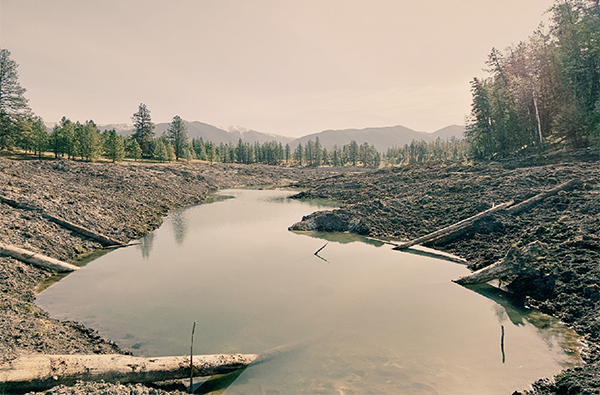Home »

Persistent drought underscores need for local water action
Despite rainfall bringing temporary relief throughout the province, British Columbia still faces region-wide drought conditions well into fall.
British Columbia’s Drought Monitoring Summary shows much of the province remains under significant water stress. Many regions are still at Levels 3 to 5, the highest designations on the provincial scale.
In the Elk Valley, these conditions serve as a stark reminder of how vulnerable our water systems are and how local governance is needed to help build resilience.
The significant drought concerns in southeastern B.C. demonstrates the need for greater coordination and investment in local watershed security according to Kat Hartwig, Living Lakes Canada Executive Director and Chair of the Elk River Monitoring Collaborative.
“Many of our small and rural communities are already experiencing how water shortages impact everything from drinking water to wildfire suppression,” said Hartwig.
That message echoes the findings of the Elk River Monitoring Collaborative’s Without Water Symposium, held in Grasmere in June. The recently released What We Heard report captures the collective insights from over 100 participants gathered to discuss the future of water security in their region.
“The message from the symposium was clear: there is enough water, until there isn’t. We need transparent data and watershed planning, and committed and empowered local leadership to manage water quantity across B.C.’s regions,” continued Hartwig.
Participants at the symposium spoke candidly about personal, cultural, and spiritual connections to water, that watershed-related decisions must be made amid uncertainty, and that integrated decision-making is a necessity.
The feedback informed the following calls to action:
- Better incorporate Indigenous worldviews into decision-making while considering applied mechanisms such as “rights for nature” or “legal personhood.”
- Support local and Indigenous water governance with sustained resources such as funded local water tables.
- Reduce knowledge siloes to increase efficiency by leveraging the power of collective action for community adaptation.
These findings align with growing provincial calls for increased watershed investment, particularly as local governments and rural communities face compounding challenges from drought and wildfire.
“The provincial Watershed Security Fund, with annual disbursements ranging from $3-5 million, provides some support for community and ecosystem adaptation by working to address water security. However, further designated support is still required across the province,” stressed Hartwig.
“Modernizing B.C.’s Water Licensing system could be a mechanism to help support local water governance and decision-making. In turn, this would benefit local economies and ecosystem services, for our collective well-being,” concluded Hartwig.
For more information and to download the What We Heard document, visit elkrivercollaborative.ca.
Lead image: The disappearing Shottanana Lake at Yaq̓it ʔa·knuqⱡi’it First Nation. Photo by Ian Adams
Elk River Alliance







